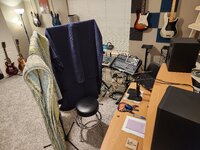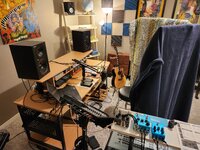rob aylestone
Moderator
We've chatted a bit about mic placement for acoustic guitars, so I thought I try a couple of videos so instead about talking about soundhole = dark, boomy and fingerboard - bright and noisy, people who have never tried it can hear the differences positions make.


